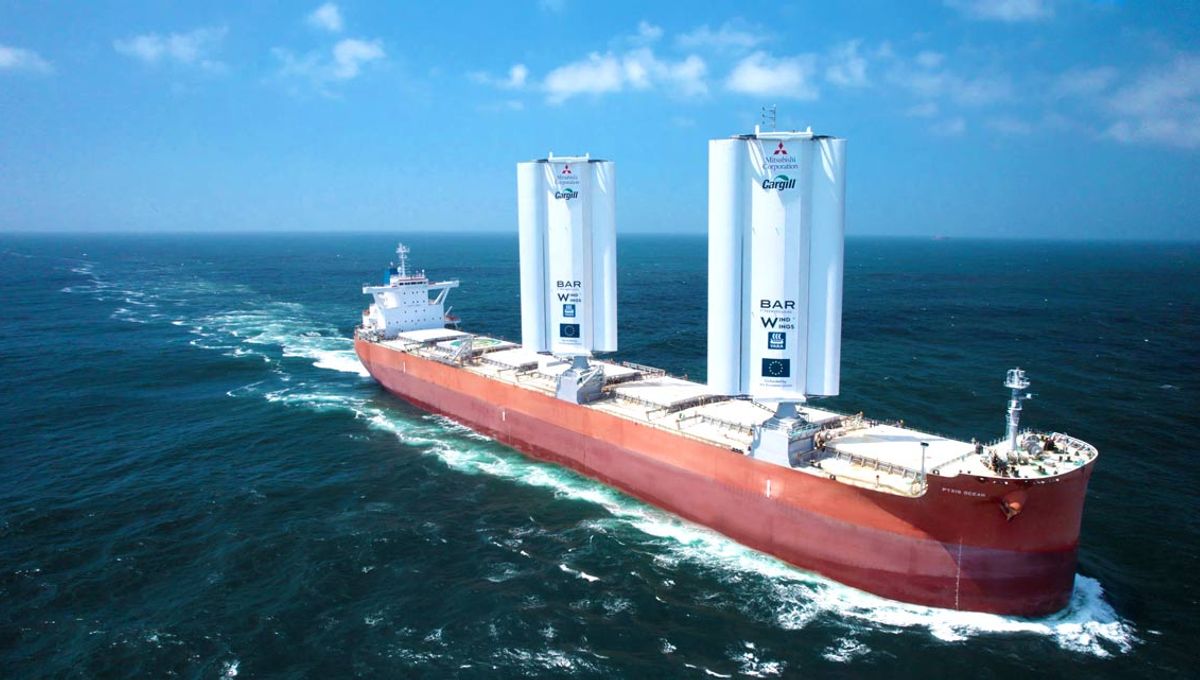The Pyxis Ocean ship, retrofitted with two 37.5-meter (123-foot) high sails called WindWings, recently embarked on an exciting journey from a shipyard in China to Brazil. This voyage is not like any other – it will be powered by the wind, reducing fuel consumption by up to 30 percent.
This groundbreaking project is a collaboration between Cargill, BAR Technologies, Mitsubishi Corporation, and Yara Marine Technologies. As the ship sails across the Pacific, engineers will closely monitor its performance to determine if wind propulsion can be the key to decarbonizing the shipping industry.
The world faces a dilemma: global trade heavily relies on cargo ships, yet the industry is predominantly fueled by fossil fuels.
Shipping facilitates up to 90 percent of global trade. With the demand for international freight trade expected to triple by 2050, the volume of goods transported by sea will skyrocket.
However, the maritime industry is also responsible for approximately 2.8 percent of global greenhouse gas emissions. The International Maritime Organization aims to achieve net-zero emissions from international shipping by 2050, but the path to this goal is not straightforward.
While traditional windsails may seem like a potential solution, it is uncertain whether they can single-handedly solve the problem.
“The maritime industry is on a journey to decarbonize – it’s not an easy one, but it is an exciting one,” said Jan Dieleman, President of Cargill’s Ocean transportation business, in a statement.
“At Cargill, we have a responsibility to pioneer decarbonizing solutions across all our supply chains to meet our customers’ needs and the needs of the planet. WindWings technology comes with risks, but as an industry leader, we are not afraid to invest, take risks, and be transparent with our learnings. We aim to assist our partners in the maritime transition to a more sustainable future,” Dieleman added.
“If international shipping is to achieve its ambition of reducing CO2 emissions, then innovation must take center stage. Wind is a nearly cost-free fuel, and the potential for emissions reduction, along with significant efficiency gains in vessel operating costs, is substantial. Today marks the culmination of years of pioneering research, investment in our unique wind sail technology, and collaboration with Yara Marine Technologies as our industrialization partner. Together, we provide vessel owners and operators with an opportunity to realize these efficiencies,” emphasized John Cooper, Chief Executive Officer of BAR Technologies.








